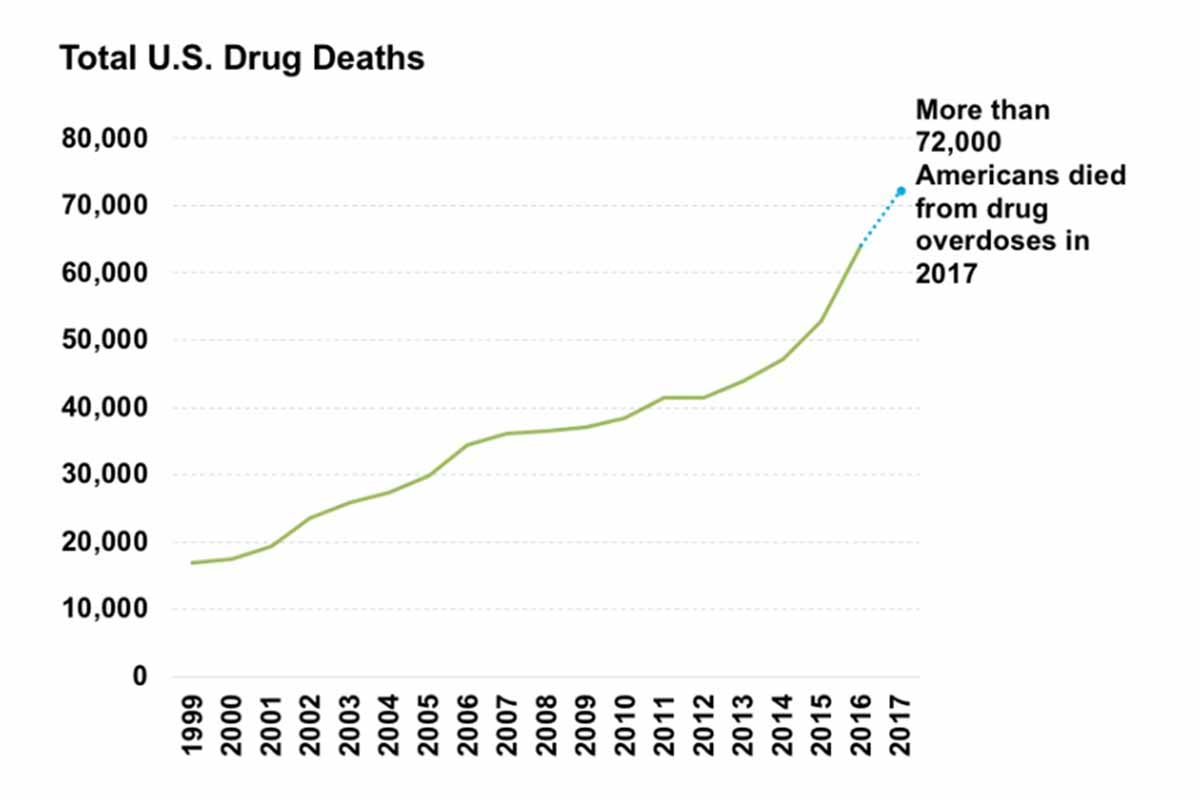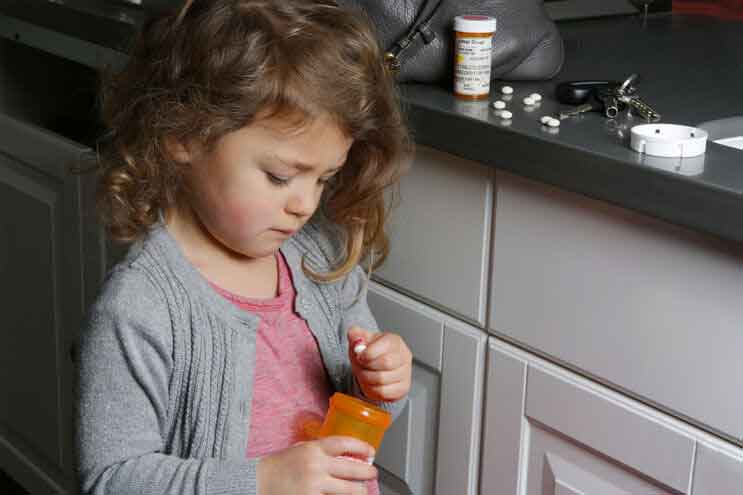Living with a loved one’s substance use disorder can be one of the most difficult experiences anyone can ever go through. The feelings of frustration, sadness, anger, and helplessness can be overwhelming as you watch someone transform before your eyes into an entirely different person.
There are few things more devastating than having a front-row view of a substance use disorder.
Here are seven of the most terrifying — but common — behaviors of someone with a drug addiction and insight from an interventionist to help family members understand why they’re occurring.
1. They Lie
Addicts lie. But it’s not necessarily out of malice or ill intent.
Their lies are driven by their brain’s incessant demand for chemicals to soothe the survival part of the brain, which is hijacked by drug addiction.
“When a person is addicted, the primitive survival part of the brain is in the driver’s seat,” explains board-registered interventionist and family recovery coach Ricki Townsend.
“The primitive limbic system seeks drugs at any price, and the rational, caring, empathetic prefrontal cortex is silenced.”
The brain of someone struggling with substance use disorder (SUD) is focused on its most basic need—to survive. When people suffering from opioid use disorder experience extreme and unpleasant withdrawal symptoms, the brain feels that withdrawal is threatening survival.
As Townsend explains, “The brain is telling the body that it’s going to die. And what would you do if you hadn’t eaten for five days? You’d probably break into someone’s house and steal their food. The addicted brain acts from that same place of fear and desperation.”
Even with that knowledge, it’s scary to watch a loved one lie right to your face so convincingly that you start to believe them. You may even question your own perception of the situation.
2. They Manipulate
No one is more likely to be manipulated by someone suffering from substance use disorder than the people closest to them. Parents are often the easiest target for manipulation because they often cannot fathom that their beloved child is hostage to drugs or alcohol.
“Impossible! This isn’t how we raised him/ her,” is a common refrain from a parent.
Because parents aren’t educated about the root causes of addiction, which can include early exposure to alcohol and illicit or prescription drugs, they can’t even begin to imagine that their child might be experimenting with or addicted to drugs or alcohol.
It’s fertile ground for manipulation.
For example, making confessions of wrongdoing to different family members to cover bigger lies and odd behavior.
- A teen confesses to dad he has been cutting class.
- He admits to his sister that he tried marijuana.
- He tells his mom that he drank a beer at a party.
In reality, the teen’s small admissions of guilt are helping him cover up evidence of more serious substance use.
Addicts may also manipulate by twisting blame and guilt for their behavior on someone else or by promising to get help the next day… or the day after… or the day after that.
“Typically, they go to bed swearing that they will get help the next day, but when they wake up, their bodies are screaming out for drugs,” explains Townsend.
“While it appears manipulative, they often do have the best intentions of getting sober, but their belief that they are dying wins out.”
3. They Act Unpredictably
Drug or alcohol use can lead to mood swings far outside the ups and downs of regular life or normal teen behavior.
At first, opioid painkillers can create a euphoric state, causing a user to be extremely happy and giddy. But when the drugs wear off, users can experience some pretty severe opioid side-effects, such as:
- restlessness
- agitation
- excruciating muscle and bone pain
- insomnia
- diarrhea
- vomiting
- cold flashes with goosebumps
- involuntary leg movements
As opioid addiction progresses, users stop chasing the “high” of opioid use. Instead, they seek opioids to avoid the bone-crushing symptoms of withdrawal.
Wild mood swings can have a devastating effect on people living with someone who is in the throes of an opioid use disorder. You never know where they stand from one moment to the next and who will appear in your household.
Is it Dr. Jekyll today or Mr. Hyde?
At the same time, people who are addicted can be surprisingly predictable. The survival part of their brain singularly drives them.
They will do whatever it takes to get access to the substances, even if that means disappointing and hurting themselves and the ones they love.
Lying, stealing, sneaking pills out of someone else’s purse or medicine cabinet… these are all very common behaviors from someone whose brain is telling them they must have more (opioids, drugs, or alcohol) at any cost.
And, like any untreated disease, substance use disorder often runs a predictable course: leading to physical side-effects such as heart disease, diabetes, and even overdose. If left untreated, the disease of addiction can be dangerous and deadly.
4. They Become Obsessed
Addiction is best described as an obsession of the mind.
When someone is suffering from substance use disorder, their thinking and behavior revolve completely around the addiction.
How to get more, how relieved they will feel when they get their fix, and how much more they’ll need next to avoid becoming “dope sick.”
Their thoughts become laser-focused on their need for drugs to survive, which overpowers any logic or reasoning.
It’s a disease characterized by the compulsive repetition of an activity despite its life-altering consequences.
For most people, the neural circuitry in the brain maintains a delicate balance between motivation and restraint. But this equilibrium is disrupted in the brains of people suffering from addiction. Research has shown that people with addiction have lower levels of dopamine receptors in the prefrontal cortex region of the brain, the region necessary for good judgment, planning, and self-regulation.
The result? An impaired ability to control thoughts and behaviors.
5. They Engage In Criminal Acts
When one’s brain becomes disrupted by substance use disorder, their value systems take a back seat to “right and wrong.” Essentially, the screaming brain compels them to do whatever it takes to find more of these “life-sustaining” drugs.
A teen who never got into trouble may suddenly start having run-ins with the law. The quest to satisfy the survival part of the brain can lead them to do illegal things they would have never considered before, such as:
- Stealing prescription pills from the medicine cabinets, purses, and homes of relatives, neighbors, or family friends.
- Lying about pain or causing self-injury to get prescriptions.
- Doctor shopping to try and get more prescriptions written.
- Forging prescriptions. Stealing valuable items around the home to sell or pawn for cash to support their habit.
- Stealing money from family members or friends.
- Driving under the influence.
- Shoplifting valuable items to sell or pawn.
- Getting drug money by turning tricks or selling drugs.
- Injecting heroin.
The teen you previously thought incapable of even cheating on a test at school may suddenly find herself with an arrest record and a long line of people whose trust she’s lost.
6. They Shift The Blame
The car accident was the other driver’s fault. The teacher who called them out on unexplained absences has it out for them. They lost their job because the boss never liked them. They took the pills because you put too much pressure on them to do good at school.
Substance use disorder steals away personal responsibility. The person addicted to drugs or alcohol often feels like they are a victim, unfairly targeted, like others are out to get them, or they’re being set up.
The more that you try and call them out on their behavior, the more the blame game will be played.
As Townsend explains, people with substance use disorder shift the blame because they don’t have to confront the horrible truth about themselves. “There is so much shame in addiction,” she says. “Looking in the mirror is ugly.”
“It is such a stigmatizing disease, even when people come by it accidentally, such as taking pills prescribed by a doctor. And that shame encourages people to shift the blame and avoid getting the help they need. Blame and shame play a deadly role in the disease of substance use disorders.”
7. They May Become Abusive
Because you care about your loved one and you want to try and help her, you call her out on her behaviors, words, and actions. And she feels defensive as she lies, manipulates, and shifts the blame.
As her brain starts to run short of drugs (i.e., “withdrawal”), the drug user may behave irrationally, even aggressively.
Substance use can lead to brain injury, just like physical impact can injure the brain of an NFL player or someone involved in a car accident.
In both cases, the brain is injured, although it doesn’t garner the compassion or understanding of, say, a visible injury like a broken leg.
That injured brain may react aggressively to those who threaten to stop the flow of drugs. If you are trying to cut off the only thing that offers relief, angry words may be spoken, things can be damaged and broken, and sometimes, people can be physically hurt. There’s one final thing that people with a drug addiction do to their loved ones that’s worse than any lie or abusive behavior.
Finally, The Most Horrifying Thing An Addict Does…
Substance use disorder kills.
The most horrifying thing someone can do to a loved one is to lose their battle with addiction. Every day, drugs cost people their lives.
In the last decade, there’s been a 2x increase in the amount of drug overdose deaths in the U.S.

Total U.S. drug deaths: more than 72,000 Americans died from drug overdoses in 2017, including illicit drugs and prescription opioids – a 2-fold increase in a decade.
The biggest contributing factor to this increase is the opioid epidemic, which claimed the lives of approximately 200,000 people in 2021 and 2022, a 50% increase over pre-pandemic levels.
To put that in perspective, the two-year opioid-related death toll surpassed the number of American combat deaths in the country’s five most recent wars combined.
This issue has become a public health crisis.
Opioids affect the part of the brain that regulates breathing. High doses of these drugs can lead to respiratory depression and death. Unfortunately, even when used as prescribed, opioids can lead to tolerance – meaning you may need to use more and more of the drug to get the same effects.
A well-meaning individual who takes too many pain pills to feel better can inadvertently put themselves at risk for overdose death. The same goes for anyone who needs to take more and more of the drug to get the same high or to avoid withdrawal symptoms.
Combining opioids with other respiratory system depressants, such as alcohol, sedatives, or anti-anxiety medications, can also increase the risk of overdose death.
According to the World Health Organization, people dependent on opioids are the ones most likely to suffer an overdose.
What Can You Do?
If you’re worried that someone you love may be suffering from substance use disorder, there are several things you can do to try and help them and your family.
Drug addiction often starts with medications pilfered from the home medicine cabinet. Lock up your prescription medications, and dispose of any medications that are not currently needed.
Have frank and repeated discussions with your teens about the dangers and highly addictive nature of prescription pills. Many teens mistakenly think a prescription pill is less dangerous than an illegal drug.
Watch carefully for the signs of teen drug abuse.
If you suspect your teen/family member has already traveled the road from drug experimentation to substance use disorder, seek the support and professional treatment your family will need to survive. You’re not alone.
Call the Substance Abuse and Mental Health Services Administration SAMHSA Hotline 1-800-662-HELP (4357) for free, confidential, 24/7 treatment referral and information for individuals and families facing substance abuse disorders.
Note: this post has been updated for 2023.



